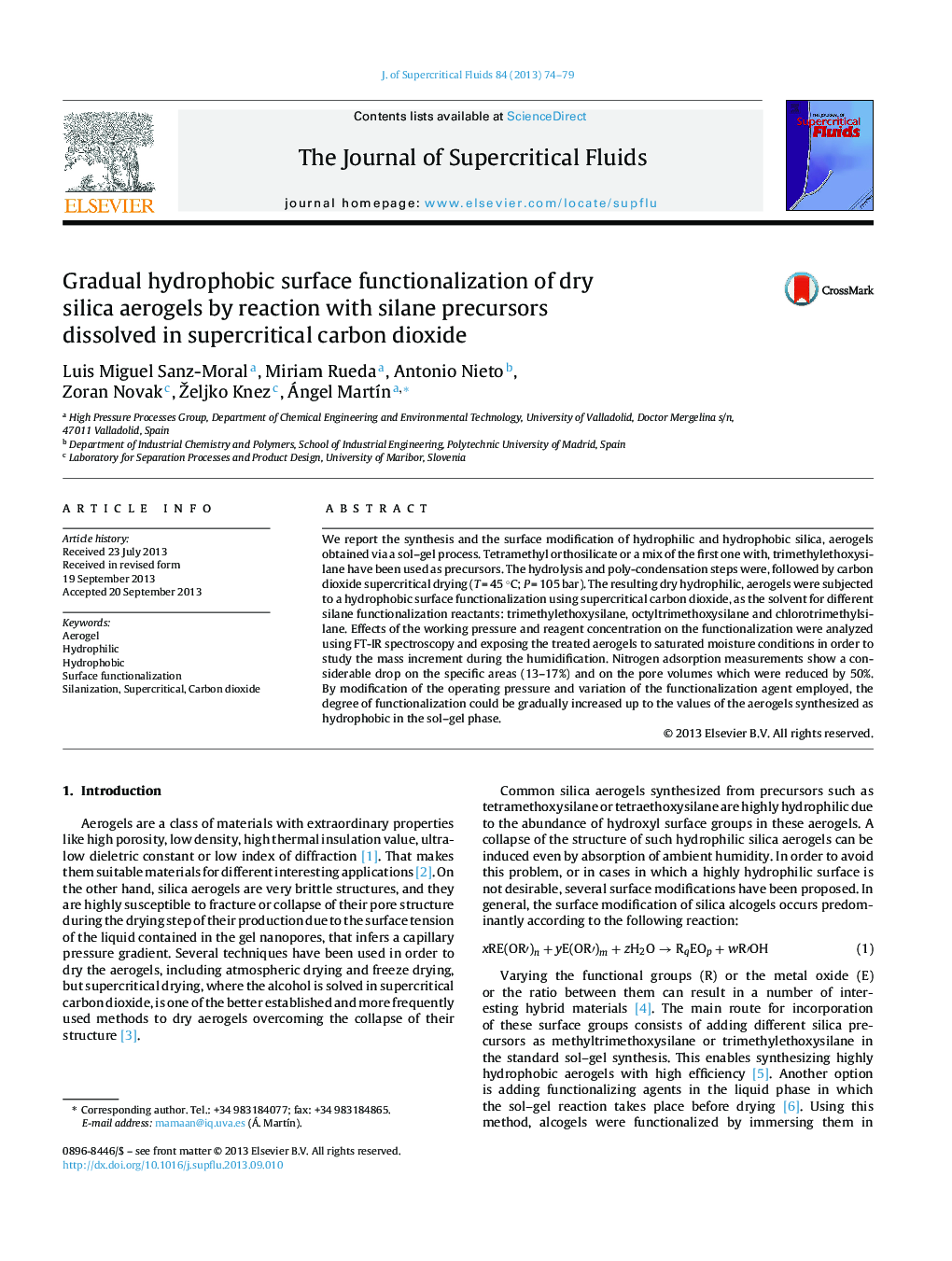| Article ID | Journal | Published Year | Pages | File Type |
|---|---|---|---|---|
| 230832 | The Journal of Supercritical Fluids | 2013 | 6 Pages |
•Hydrophilic and hydrophobic aerogels were synthesized using different precursors.•Aerogels were functionalized by reaction with silane precursors in sc-CO2 medium.•Gradual functionalization was observed by FTIR and humidity absorption measurements.•Functionalization of aerogels reduced pore volume and surface area.
We report the synthesis and the surface modification of hydrophilic and hydrophobic silica, aerogels obtained via a sol–gel process. Tetramethyl orthosilicate or a mix of the first one with, trimethylethoxysilane have been used as precursors. The hydrolysis and poly-condensation steps were, followed by carbon dioxide supercritical drying (T = 45 °C; P = 105 bar). The resulting dry hydrophilic, aerogels were subjected to a hydrophobic surface functionalization using supercritical carbon dioxide, as the solvent for different silane functionalization reactants: trimethylethoxysilane, octyltrimethoxysilane and chlorotrimethylsilane. Effects of the working pressure and reagent concentration on the functionalization were analyzed using FT-IR spectroscopy and exposing the treated aerogels to saturated moisture conditions in order to study the mass increment during the humidification. Nitrogen adsorption measurements show a considerable drop on the specific areas (13–17%) and on the pore volumes which were reduced by 50%. By modification of the operating pressure and variation of the functionalization agent employed, the degree of functionalization could be gradually increased up to the values of the aerogels synthesized as hydrophobic in the sol–gel phase.
Graphical abstractFigure optionsDownload full-size imageDownload as PowerPoint slide
